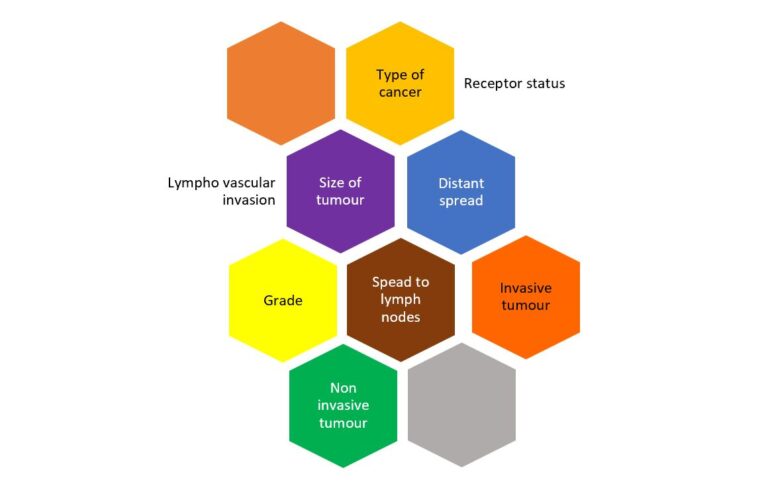What matters in your Breast cancer pathology report
How your disease affect or how radically you need to be treated depends on your breast cancer pathology report. It reflects the prognosis of your breast cancer. Been enlightened on your breast cancer pathology report, helps to get an idea about the correct and ideal treatment for you. Treatment is always tailor made by the Oncologist to suit individually depending on the final report.
Biopsy of a breast mass is done in 2 instances. First, for the diagnosis, a core of tissues can be taken through a core-cut needle (Previously, a fine needle was used to obtain only the cells rather than a core of tissues. – Fine Needle Aspiration Cytology – FNAC). Secondly, following proper surgical removal of either the lump (lumpectomy) or the breast (mastectomy), the final breast cancer pathology report will be prepared by the Pathologist. The final biopsy report with other clinical criteria reflect the prognosis or the survival rate of an individual. The survival rate is not absolute but an assumption according to former scientific and published data of similar stages of the disease. It is wise to discuss your survival outcome and prognosis with your specialist

Important prognostic factors
Even within breast cancer, there are many types, which are classified according to the cell type of origin. The commonest been ductal carcinoma and next lobular carcinoma, which originates from milk duct cells and lobular cells respectively. Although the prognosis could be better with lobular carcinomas, tends to occur on both breasts (bilateral) or can have multiple foci within a breast.
The next important element is whether the tumor has invaded the basement membrane or not (Invasion). Basement membrane is the thin pliable sheet that is found beneath the surface cells supporting them, similar to a foundation layer of a brick wall. The dissemination through the lymphatic channels or the blood stream occurs only when the tumor penetrates this basement membrane, hence non-invasive carcinomas technically do not spread out of the primary site, carrying the best prognosis. Non invasive cancers are named as in-situ carcinomas when reported. Hence ductal and lobular carcinomas are named as ductal carcinoma in situ (DCIS) and lobular carcinoma in situ (LCIS) if seen within the removed growth.
Size of the tumor specially if its beyond 5cm is considered as an advanced tumor. Not only the survival rates, the size matters a lot when surgical options are decided.
Breast cancer spreads commonly to the draining lymph nodes, which are found under the armpit (axillary nodes). Therefore the invaded tumor cell clusters may be seen within the blood and lymphatic vessels in the tumor, which will be reported as lymphovascular invasion (LVI).
The number of affected nodes, and whether the nodes are mattered and spread out of the capsule of the node carries poorer prognosis.
Further tumor can spread via the blood stream (Metastases) to distant organs such as the bone, liver, lungs and brain.
The aggressiveness of the tumor is graded. There are only 3 grades, grade 1 cancer been the least aggressive cancers, where the cells closely resembles the original cell lines. Grade 3 tumors behave aggressively, and could be resistant to certain treatment modalities too. They poorly resembles the original cell features and are commonly named as undifferentiated or poorly differentiated tumor in the pathology report.
Addition to the usual hematoxylin and eosin stains used to color the tissue sections mounted on a glass slide, there are special stains used to assess the receptor status of a breast cancer by the pathologist. These immunomarker stains are important to assess the prognosis as well as to identify their efficacy towards various chemotherapy and hormonal therapy regimes. The commonest marker stains are estrogen receptors (ER), progesterone receptors (PR), Her 2-neu and Ki67 markers. When all three markers, ER, PR, Her 2-neu are reported as negative (triple negative disease), is considered as triple negative disease and carries poor prognosis.



